Health and social care staff experience: report 2017
This report presents the 2017 national iMatter results together with national Dignity at Work survey results.
iMatter Report 2017
The iMatter section of this report provides detailed information and analysis of what these measures mean. These are mapped to the Staff Governance Standard and include a breakdown of Response Rates, Employee Engagement Index Scores (EEI), number of No Reports and Action Plans completed within the 12 week period per Organisation. This is explained in more detail throughout the report.
The purpose of the iMatter Questionnaire
The Scottish Government is committed to improving the experience of patients and service users through enhancing "Staff Experience". The iMatter Staff Experience Continuous Improvement Model aims to deliver new ways of engaging staff, which feel right for staff at every level. It introduces new opportunities where staff can feed back their experiences, in their teams, in a real-time basis. Once team results are delivered two weeks after questionnaires closing, all staff are invited to develop continuous improvement action plans as well as having the opportunity to share successes within their teams.
Data Collection
The iMatter Questionnaire and Dignity at Work Survey used Webropol to distribute electronic and paper questionnaires to NHSScotland employees, as well as those employed by the local authority who work in a Health & Social Care Partnership (HSCPs) who chose to participate.
The iMatter questionnaire represents the views of health and social care staff who responded in 22 Health Boards and 23 HSCPs.
The process for distributing the iMatter questionnaire begins with a team confirmation period. Managers (at individual team level) were required to confirm their teams to ensure accuracy and that respondent information is updated. This was conducted for a period of 4 weeks where managers are required to remove any staff who have left the team, exclude staff who will not be available during the questionnaire stage and add any new staff that have joined the team.
Once this process was completed, the electronic questionnaire was sent out to all respondents with an email entered on the system and remained open for a period of 3 weeks. The paper version was also available to be printed and distributed on the same day, with the deadline to receive paper copies set for 1 week after the questionnaire closing date. All paper responses received within the deadline were also input within 1 week of the receipt deadline. Reminders were sent out each week over the 3 week period.
The iMatter questionnaire and data collection process was undertaken by Webropol, an independent company, to ensure full anonymity for the respondents. In order to keep the reports within small teams of 4 or less anonymous, the minimum response rate for team reports to be published must be 100%. The reports are published at team level and available to that team only. The response data contained in team reports informs reports at both Directorate and Organisational level.
One of the differences between the iMatter Questionnaire and the Dignity at Work Survey is that no demographic questions were asked in iMatter. Furthermore, in the iMatter Questionnaire all questions were mandatory – which means that all questions needed to be answered in order for the response to be accepted. This eliminated partial loss of data.
Response Rates and Employee Engagement Index Score (EEI)
The Response Rate shows the number of staff issued with the questionnaire (Recipients) and the number of staff who responded (Respondents) as an overall percentage.
A response rate of 60% is required for teams of 5 or more and 100% for teams of 4 or less to generate a report. This is to ensure anonymity and the higher the response rate, the more realistic the feedback of how staff feel about working in their team.
The Employee Engagement Index (EEI) score is shown as a percentage of the average score. This is calculated based on the number of responses for each point on the scale (Strongly Agree – Strongly Disagree) multiplied by its number value (6-1). These scores are added together and divided by the overall number of responses to give the percentage score to show level of engagement (see Appendix 1).
In 2017, the iMatter questionnaire achieved a 63% response rate, representing 108,230 respondents out of 172,587 recipients who completed the questionnaire. Of the 172,587 recipients 23,918 (14%) were social care staff within HSCPs. The majority of the questionnaires were sent by email (82%) achieving a response rate of 68%. Paper questionnaires achieved a response rate of 38%.
| Electronic |
Paper |
Total |
|
|---|---|---|---|
| Surveys Sent |
141,990 |
30,597 |
172,587 |
| Responses Received |
96,631 |
11,599 |
108,230 |
| Response Rate |
68% |
38% |
63% |
The majority of experiences were captured for Organisations in 2017, but due to phasing some cohorts from 2016 were required to be included to provide a comprehensive national report.
Spoiled paper responses
Over 3,000 paper copies, representing 21% of the total questionnaires received by Webropol were spoiled and could not be input. These could not be input for a number of reasons:
- 57% of these were because of partial responses. A large number of these were because of paper copies printed double sided where the respondent failed to notice the questions overleaf.
- 27% because of completion errors where more than one response was given to the same question.
- The remaining 16% of spoiled responses derive from a combination of crossed out QR codes, which meant the response could not be scanned; duplicate responses and questionnaires received past the deadline and were therefore not input.
Had these questionnaires been completed correctly or arrived on time this would have had a significant impact on the response rates.
iMatter Results 2017
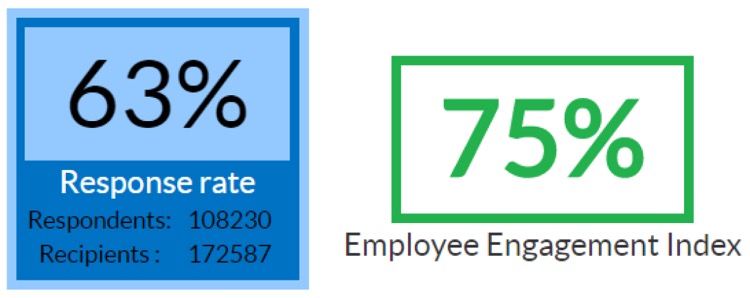
Staff Governance Standard – Strand Scores
The strands of the Staff Governance Standard were mapped against the 20 components forming part of the Staff Experience Framework (see Appendix 2). The 28 questions were then mapped to the 20 components and Staff Governance Strands to provide a measure of Employee Engagement (see Appendix 3).
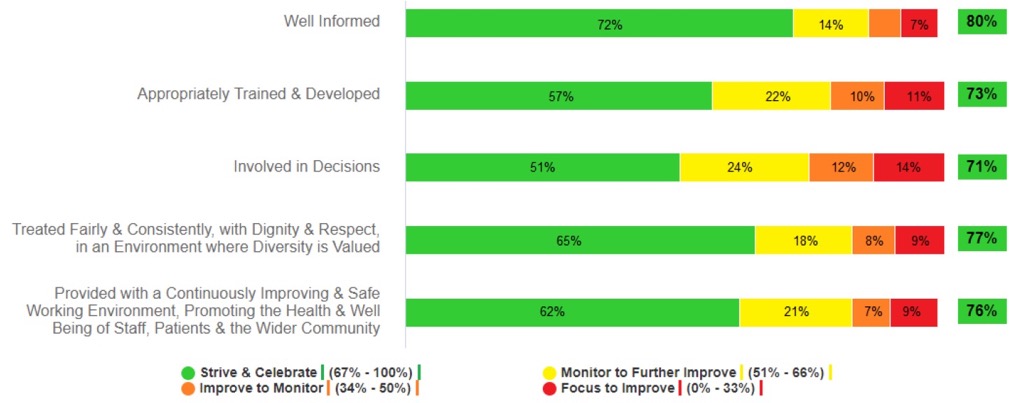
Experience as an individual
Results are aggregated for each question presented under the heading ‘As an Individual’
Number of respondents 108230
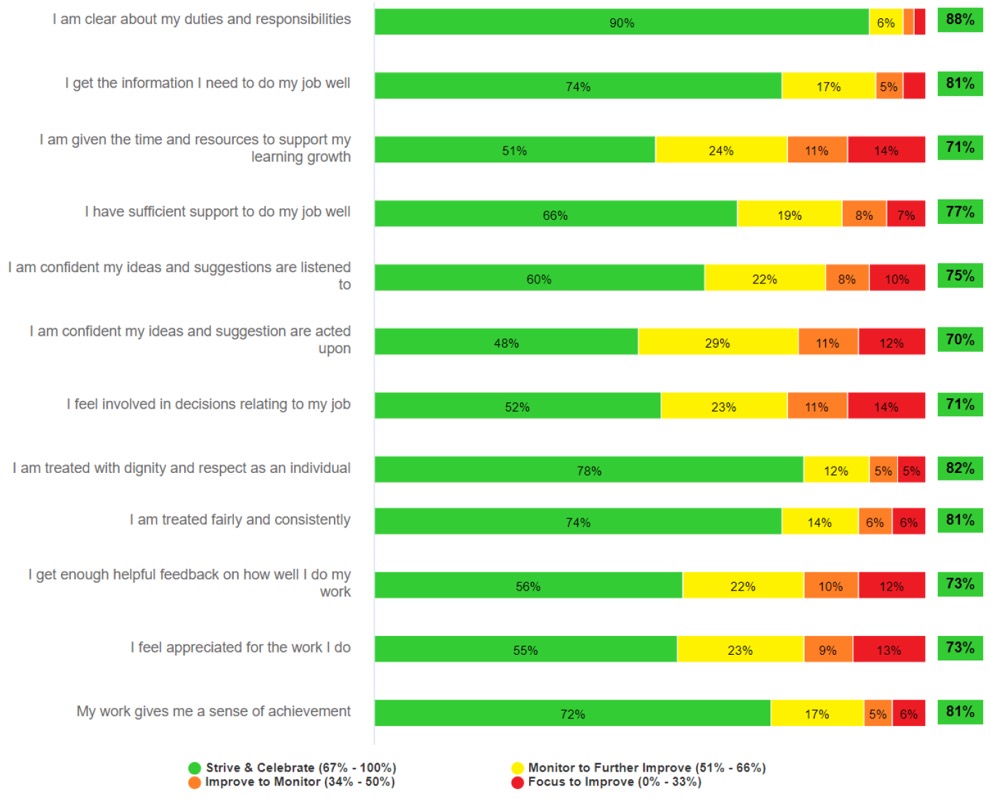
My Team / My Direct Line Manager
Results are aggregated for each question presented under the heading ‘My Team / My Direct Line Manager’
Number of respondents 108230
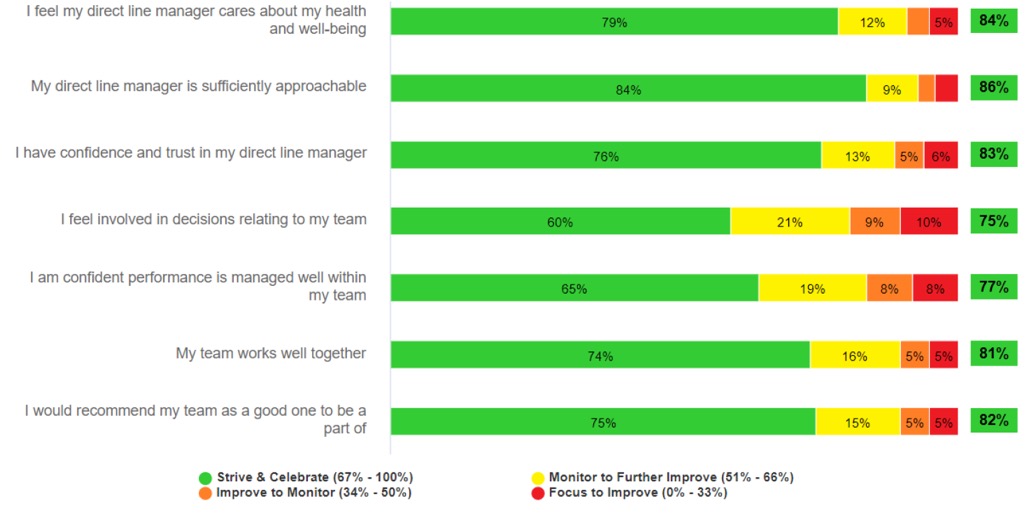
My Organisation
Results are aggregated for each question presented under the heading ‘My Organisation’, where Organisation refers to and includes both NHS Board and Health & Social Care Partnership. ‘Senior Managers’ refers to the Chair, Chief Executive, Non-Executives and Directors/Chief Officer.
Number of respondents 108230
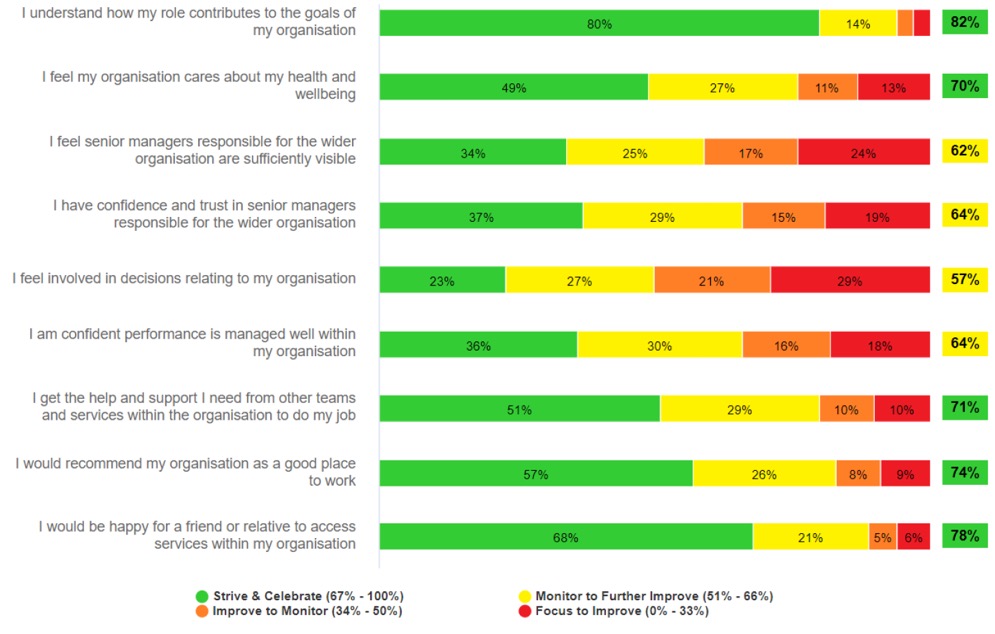
Overall, working within my organisation is a ...
The thermometer summarises the responses to Question 29 – the numeric question asking staff to rate working in the organisation.
Number of respondents 108230
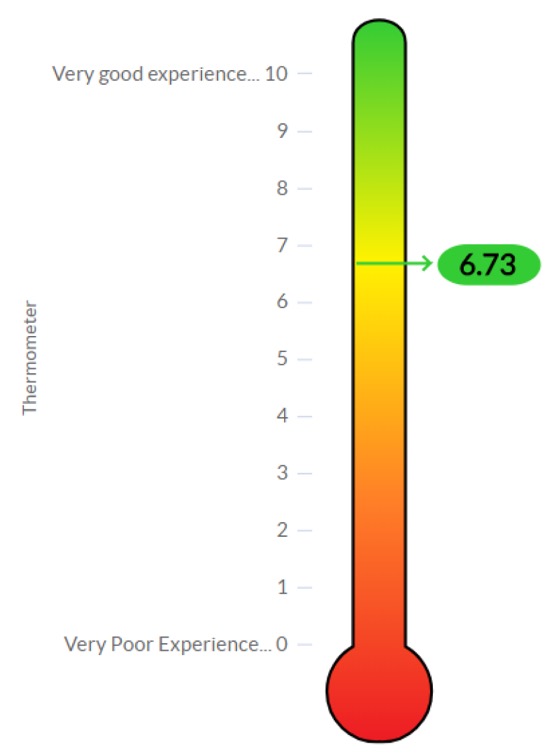
EEI numbers for teams within Health and Social Care
This report shows the EEI threshold table and the distribution of team reports aggregated.

In total 108,230 out of 172,587 answered the iMatter questionnaire, providing a response rate of 63%. The Employee Engagement Index (EEI) is 75% for 2017.
The results for social care staff in HSCPs, who were invited to participate, have been included within the associated Health Board and NHSScotland figures.
Staff Governance Standard
The Staff Governance Standard Strands indicate that respondents felt that they were well informed (80%) and treated fairly & consistently with dignity and respect in an environment where diversity is valued (77%). They also felt they were provided with a continuously improving and safe working environment that promotes the health and well-being of staff, patients and the wider community (76%). Results relating to appropriate training and development (73%) and feeling involved in decisions (71%) were lower.
Experience as an individual
Regarding the experience as an individual, 88% of the respondents felt that they were clear about their duties and responsibilities, which is significantly higher than the other questions. The questions that received the lowest scores were “I feel involved in decisions relating to my job” (71%) and “I am confident my ideas and suggestion are acted upon” (70%).
For individual level questions the average score was 77%.
My team/direct line manager
In the section relating to the team, the questions “My direct line manager is sufficiently approachable” and “I feel my direct line manager cares about my well-being” received the highest scores with 86% and 84% respectively. The questions with lower scores in this section were “I am confident performance is managed well within my team” (77%) and “I feel involved in decisions relating to my team” (75%).
For team/direct line manager level questions the average score was 81%.
Organisation
On the organisational level questions “I understand how my role contributes to the goals of my organisation” (82%) and “I would be happy for a friend or relative to access services within my organisation” (78%) received the highest scores. Questions with the lowest score were “I feel senior managers responsible for the wider organisation are sufficiently visible” (62%) and “I feel involved in decisions relating to my organisation” (57%).
For organisation level questions the average score was 69%.
In the thermometer question which relates to the overall experience of working for the organisation, this was the only question that was answered on a scale between 0 and 10. The result was 6.73. For further analysis, the thermometer question was recalculated using the same scale as the other 28 questions for comparison purposes. When converted it achieved a score of 73%. When comparing the response average of the other 28 questions, which ranged from 57% to 88%, this question was placed in the bottom third of the ranking list.
In the overall experience question the scale has been reversed so the answer alternatives are stated from negative to positive. It cannot be confirmed if this had an impact on the overall score.
iMatter Response Rates, EEI & Action Plans 2017 per Organisation
This report contains the percentages for Response Rate, EEI score and Action plans recorded within 12 weeks for each Organisation. 2017 will provide the benchmark for future comparison.
| Organisation |
Response rates |
EEI |
Action plans agreed |
|---|---|---|---|
| 2017 |
2017 |
2017 |
|
| Golden Jubilee Foundation |
68% |
78% |
62% |
| Healthcare Improvement Scotland |
80% |
79% |
73% |
| NHS 24 |
67% |
75% |
15% |
| NHS Ayrshire & Arran |
63% |
76% |
55% |
| NHS Borders |
61% |
74% |
26% |
| NHS Dumfries & Galloway |
63% |
75% |
12% |
| NHS Education for Scotland |
81% |
80% |
71% |
| NHS Fife |
62% |
75% |
41% |
| NHS Forth Valley |
65% |
75% |
26% |
| NHS Grampian |
64% |
76% |
53% |
| NHS Greater Glasgow & Clyde |
58% |
No report |
44% |
| NHS Health Scotland |
85% |
81% |
97% |
| NHS Highland |
58% |
No report |
29% |
| NHS Lanarkshire |
65% |
77% |
49% |
| NHS Lothian |
65% |
76% |
33% |
| NHS National Services Scotland |
76% |
77% |
78% |
| NHS Orkney |
73% |
75% |
81% |
| NHS Shetland |
61% |
78% |
13% |
| NHS Tayside |
65% |
74% |
39% |
| NHS Western Isles |
52% |
No report |
12% |
| Scottish Ambulance Service |
64% |
67% |
73% |
| The State Hospital |
78% |
76% |
78% |
| NHSScotland |
63% |
75% |
43% |
iMatter Results Comparison per Organisation
The response rates achieved by the organisations within Health and Social Care varied from 52% to 85%.
The organisations, which achieved the highest response rates, sent a lower total number of questionnaires, and collected a low proportion of responses via paper. This indicates that organisations with a smaller staff population achieved a significant response ratio considering their size.
The three organisations with the lowest response rates were also the only organisations with a response rate lower than minimum of 60%. In order to meet the minimum response rate, NHS Western Isles needed 78 additional completed responses; NHS Greater Glasgow & Clyde 667; and NHS Highland 204.
Where the response rate was not achieved, an organisation report was not published. Teams were still required to complete and agree action plans within a 12 week period. The action plan completion rate for these boards varied. NHS Greater Glasgow & Clyde had 44% action plans agreed within a 12 week period. NHS Highland and NHS Western Isles had an action plan completion rate of 29% and 12% respectively.
The share of action plans completed within a 12 week period range from 12% to 97% between the organisations. There are big differences between the organisations in terms of share of action plans completed within a 12 week period. It is noticeable that none of the larger health boards show in either the top or bottom of the list.
The five organisations with the highest response rate have an average of 80% action plans agreed.
| Highest Response rate |
Reponse rates |
EEI |
Action plans agreed |
|---|---|---|---|
| NHS Health Scotland |
85% |
81% |
97% |
| NHS Education for Scotland |
81% |
80% |
71% |
| Healthcare Improvement Scotland |
80% |
79% |
73% |
| The State Hospital |
78% |
76% |
78% |
| NHS National Services Scotland |
76% |
77% |
78% |
The five organisations with the lowest response rate have an average of 25% action plans agreed.
| Lowest Response Rate |
Reponse rates |
EEI |
Action plans agreed |
|---|---|---|---|
| NHS Borders |
61% |
74% |
26% |
| NHS Shetland |
61% |
78% |
13% |
| NHS Greater Glasgow & Clyde |
58% |
No report |
44% |
| NHS Highland |
58% |
No report |
29% |
| NHS Western Isles |
52% |
No report |
12% |
The level of engagement for the employees represented by the response rates and the EEI scores, are linked to the amount of action plans agreed. It is important for managers to focus on the action plans agreed in order to achieve employee engagement. This is then seen in the participation rate and EEI score, since the organisations with the most engaged employees have the highest amounts of action plans agreed. This represents a two-way relationship that is of great importance for future results.
The five organisations with the highest share of no reports show an average of 35% action plans agreed (see table on page 15).
| Highest no report |
No report |
Response Rate |
Action plans agreed |
|---|---|---|---|
| NHS Western Isles |
45% |
52% |
12% |
| NHS Highland |
41% |
58% |
29% |
| NHS 24 |
40% |
67% |
15% |
| NHS Greater Glasgow & Clyde |
38% |
58% |
44% |
| Scottish Ambulance Service |
37% |
64% |
73% |
The five organisations with the lowest share of no reports show an average of 80% action plans agreed (see table on page 15).
| Lowest no report |
No report |
Response rates |
Action plans agreed |
|---|---|---|---|
| NHS Health Scotland |
9% |
85% |
97% |
| Healthcare Improvement Scotland |
12% |
80% |
73% |
| NHS Education for Scotland |
15% |
81% |
71% |
| NHS National Services Scotland |
15% |
76% |
78% |
| NHS Orkney |
15% |
73% |
81% |
iMatter Report of EEI scores for teams per Organisation
The table below shows the report percentage of EEI scores and the distribution of teams per Organisation.
| Organisation |
Strive & Celebrate (67-100) % |
Monitor to Further Improve (51-66) % |
Improve to Monitor (34-50) % |
Focus to improve (0-33) % |
No report |
Total |
|---|---|---|---|---|---|---|
| Golden Jubilee Foundation |
74.8% |
2.9% |
1.4% |
0% |
21% |
100% |
| Healthcare Improvement Scotland |
79.1% |
9% |
0% |
0% |
12% |
100% |
| NHS 24 |
52.4% |
7.7% |
0% |
0% |
40% |
100% |
| NHS Ayrshire & Arran |
65.7% |
6.2% |
0.3% |
0% |
28% |
100% |
| NHS Borders |
58.1% |
7.7% |
0.8% |
0% |
33% |
100% |
| NHS Dumfries & Galloway |
59.6% |
8.5% |
0.5% |
0% |
31% |
100% |
| NHS Education for Scotland |
78.9% |
5.3% |
1.1% |
0% |
15% |
100% |
| NHS Fife |
58.4% |
6.1% |
0.3% |
0% |
35% |
100% |
| NHS Forth Valley |
61.6% |
7.1% |
0% |
0% |
31% |
100% |
| NHS Grampian |
64.1% |
5.4% |
0.2% |
0% |
30% |
100% |
| NHS Greater Glasgow & Clyde |
No report |
No report |
No report |
No report |
38% |
100% |
| NHS Health Scotland |
90.6% |
0% |
0% |
0% |
9% |
100% |
| NHS Highland |
No report |
No report |
No report |
No report |
41% |
100% |
| NHS Lanarkshire |
64.9% |
4.7% |
0.1% |
0% |
30% |
100% |
| NHS Lothian |
60.1% |
6.6% |
0.6% |
0% |
33% |
100% |
| NHS National Services Scotland |
79.2% |
5.8% |
0.3% |
0% |
15% |
100% |
| NHS Orkney |
73.6% |
9.7% |
1.4% |
0% |
15% |
100% |
| NHS Shetland |
58.3% |
5.4% |
1.2% |
0% |
35% |
100% |
| NHS Tayside |
57.6% |
8.9% |
0.4% |
0.1% |
33% |
100% |
| NHS Western Isles |
No report |
No report |
No report |
No report |
45% |
100% |
| Scottish Ambulance Service |
36.2% |
25.4% |
1.9% |
0% |
37% |
100% |
| The State Hospital |
72.9% |
10.4% |
1% |
0% |
16% |
100% |
| NHSScotland |
59.4% |
7.1% |
0.5% |
0% |
33% |
100% |
The majority of all teams 8156 (59.4%) achieved a score within the “Strive & Celebrate” threshold. 974 (7.1%) teams achieved a score within the “Monitor to Further Improve” area, 67 (0.5%) teams achieved a score within the “Improve to Monitor” threshold and 3 (0%) achieved scores within the "Focus to Improve" threshold . For 4537 (33%) of the teams no EEI score has been calculated because the 60% minimum response rate was not achieved.
The three top organisations with the highest share of teams within the “Strive & Celebrate” threshold were also the organisations with the lowest share of “No reports”.
- NHS Health Scotland: Strive & celebrate 90.6%, no report 9%.
- National Services Scotland: Strive & Celebrate 79.2%, no report 15%
- Healthcare Improvement Scotland: Strive & Celebrate 79.1 %, no report 12%
The share of teams within “Monitor to Further Improve” threshold varied from 0% to 25.4%. The Scottish Ambulance had the highest share of teams (25.4%) followed by The State Hospital (10.4%) and NHS Orkney (9.7%).
Very few teams achieved a score within the “Improve to Monitor” threshold. The Scottish Ambulance Service was the organisation with the highest share, 8 teams (1.9%) achieved a score within this threshold. Followed by Golden Jubilee, 2 teams (1.4%) and Orkney, 1 team (1.4%). NHS Shetland, 2 teams (1.2%) also had a high share of teams within this threshold compared to the overall score of 0.5%.
NHS Tayside is the only organisation with teams that achieved a score within “Focus to improve”, 0.1% of the teams achieved a score within this threshold.
iMatter Components Report
This report provides a ranked summary of each question, mapped against the Staff Experience Components. It is recommended to view this report with the framework showing staff experience components mapped to the NHSScotland Health Care Quality Strategy 2010, the MacLeod Enablers, the Staff Governance Standard and the Knowledge Skills Framework (KSF) core dimensions (see Appendix 2).
| Question |
Component |
Average |
|---|---|---|
| 2017 |
||
| I am clear about my duties and responsibilities |
Role Clarity |
88% |
| My direct line manager is sufficiently approachable |
Visible and Consistent Leadership |
86% |
| I feel my direct line manager cares about my health and well-being |
Assessing Risk and Monitoring Work Stress and Workload |
84% |
| I have confidence and trust in my direct line manager |
Confidence and Trust in my management |
83% |
| I understand how my role contributes to the goals of my organisation |
Sense of Vision, Purpose and Values |
82% |
| I would recommend my team as a good one to be a part of |
Additional question |
82% |
| I am treated with dignity and respect as an individual |
Valued as an Individual |
82% |
| My team works well together |
Effective Team Work |
81% |
| I get the information I need to do my job well |
Clear, Appropriate and Timeously Communication |
81% |
| I am treated fairly and consistently |
Consistent Application of Employment Policies and Procedures |
81% |
| My work gives me a sense of achievement |
Job Satisfaction |
81% |
| I would be happy for a friend or relative to access services within my organisation |
Additional question |
78% |
| I have sufficient support to do my job well |
Access to Time and Resources |
77% |
| I am confident performance is managed well within my team |
Performance Management |
77% |
| I feel involved in decisions relating to my team |
Empowered to influence |
75% |
| I am confident my ideas and suggestions are listened to |
Listened to and Acted Upon |
75% |
| I would recommend my organisation as a good place to work |
Additional question |
74% |
| I get enough helpful feedback on how well I do my work |
Performance Development and Review |
73% |
| I feel appreciated for the work I do |
Recognition and Reward |
73% |
| I feel involved in decisions relating to my job |
Empowered to influence |
71% |
| I get the help and support I need from other teams and services within the organisation to do my job |
Appropriate Behaviours and Supportive Relationships |
71% |
| I am given the time and resources to support my learning growth |
Learning and Growth |
71% |
| I am confident my ideas and suggestion are acted upon |
Listened to and Acted Upon |
70% |
| I feel my organisation cares about my health and wellbeing |
Health and Wellbeing Support |
70% |
| I have confidence and trust in senior managers responsible for the wider organisation |
Confidence and Trust in my management |
64% |
| I am confident performance is managed well within my organisation |
Performance Management |
64% |
| I feel senior managers responsible for the wider organisation are sufficiently visible |
Visible and Consistent Leadership |
62% |
| I feel involved in decisions relating to my organisation |
Partnership Working |
57% |
The average response percentage achieved by organisations between the different questions varied from 57% to 88%. The top and bottom 4 questions were:
Top 4 questions:
- I am clear about my duties and responsibilities: 88%
- My direct line manager is sufficiently approachable: 86%
- I feel my direct line manager cares about my health and well-being: 84%
- I have confidence and trust in my direct line manager: 83%
Bottom 4 questions:
- I am confident performance is managed well within my organisation (64%)
- I have confidence and trust in senior managers responsible for the wider organisation (64%)
- I feel senior managers responsible for the wider organisation are sufficiently visible: 62%
- I feel involved in decisions relating to my organisation: 57%
The question with the highest average response percentage was the question “I am clear about my duties and responsibilities”. Three out of the four top questions related to the “Team / direct line manager” questions.
At the bottom of the components report there are four questions in the "Monitor to Further Improve", all relating to the Organisation section of the questionnaire.
Summary
When comparing respective questions, respondents rated the questions relating to their team and direct line manager higher than the questions relating to the organisation.
The biggest difference can be seen for the following questions shown in the table below:
| Team and direct line manager |
Organisation |
Difference |
|
|---|---|---|---|
| I feel my direct line manager cares about my health and well-being / I feel my organisation cares about my health and well-being |
84% |
70% |
14% |
| My direct line manager is sufficiently approachable / I feel senior managers responsible for the wider organisation are sufficiently visible |
86% |
62% |
24% |
| I have confidence and trust in my direct line manager / I have confidence and trust in senior managers responsible for the wider organisation |
83% |
64% |
19% |
| I feel involved in decisions relating to my team / I feel involved in decisions relating to my organisation |
75% |
57% |
18% |
| I am confident performance is managed well within my team / I am confident performance is managed well within my organisation |
77% |
64% |
13% |
| My team works well together / I get the help and support I need from other teams and services within the organisation to do my job |
81% |
71% |
10% |
| I would recommend my team as a good one to be a part of / I would recommend my organisation as a good place to work |
82% |
74% |
8% |
Dependency between questions
Respondents answered the question relating to their overall experience of working for their organisation (thermometer question) on a scale from 0 to 10. Further analysis of the results showed a strong correlation with the questions regarding the Organisation, specifically the question “I would recommend my organisation as a good place to work” (74%).
The responses to questions concerning the organisation which showed a weaker relationship were “I understand how my role contributes to the goals of my organisation” (82%), and “I feel senior managers responsible for the wider organisation are sufficiently visible” (62%).
The responses to questions concerning team/direct line manager have little correlation to the overall working experience (thermometer question), showing differences but not to a large extent.
There was disparity between the individual’s experience and their relationship to the overall work experience (thermometer question). The responses to the questions “I have sufficient support to do my job well” (77%), “I feel appreciated for the work I do” (73%), and “I am confident my ideas and suggestion are acted upon” (70%) have a strong relationship with the work experience. The responses to the question “I am clear about my duties and responsibilities” (88%) also had a weak relationship to the thermometer question.
As expected, the responses to the questions within each level had a strong correlation. For example, questions concerning the individual experience showed a strong relationship with other questions within the individual level. This is also seen in the responses to the organisation questions. Results showed a weak relationship between responses to questions concerning the team/direct line manager and organisation. The results from these questions appear to be independent of each other.
There is a strong dependency between the responses to the question “I am confident my ideas and suggestions are listened to” (75%) and “I feel involved in decisions relating to my job” (71%) and “I am confident my ideas and suggestions are acted upon” (70%).
There is a strong dependency between the responses to the question “My direct line manager is sufficiently approachable” (86%), “I feel my direct line manager cares about my health and well-being” (84%) and “I have confidence and trust in my direct line manager” (83%). These questions are within the section relating to your team/direct line manager.
There is a strong relationship between the responses to the question “I would recommend my team as a good one to be a part of” (82%) with the following questions “My team works well together” (81%), “I am confident performance is managed well within my team” (77%) and “I feel involved in decisions relating to my team” (75%).
The responses to the question “I have confidence and trust in senior managers responsible for the wider organisation” (64%) showed a strong correlation to the responses to the question “I feel senior managers responsible for the wider organisation are sufficiently visible” (62%).
There is a strong correlation between the responses to the question “I would recommend my organisation as a good place to work” (74%) and the responses to the following questions “I would be happy for a friend or a relative to access services within my organisation” (78%), “I feel my organisation cares about my health and wellbeing” (70%) and “I am confident performance is managed well within my organisation” (64%).
“People Make Change Happen” – iMatter Team Stories
Health Boards and Health & Social Care Partnerships have submitted a team story providing insight into how teams have used iMatter and what difference this model is making to their team and the care they deliver. These team stories form part of the quality assurance providing evidence to the real difference improved staff experience makes to improved patient and client care.
2 East Team
Enhanced Recovery Matters
Patients cared for by happier staff results in improved outcomes.
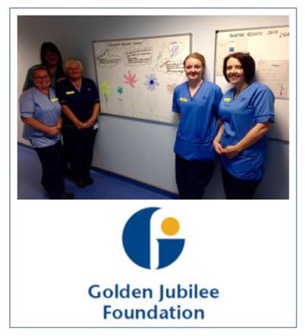
Finance & Corporate Services Teams
Collective Learning in the Corporate Services Directorate
Sharing learning- enhanced relationship, understanding of roles, increased creativity and collaboration across the Finance and Corporate Services Directorate.
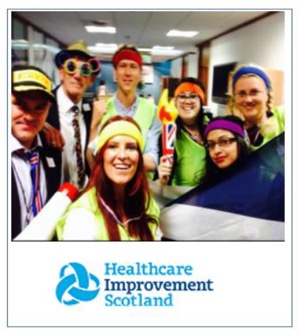
Health Information Services Team
A Fishy Tale
Using new processes to improve transparency and consistency.
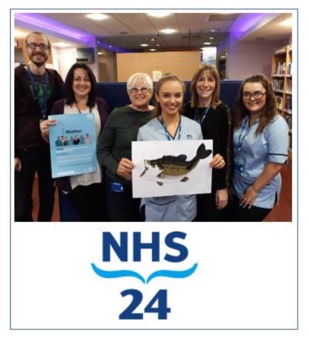
Elaine Young’s Public Health Team
Unused Courtyard Becomes Health & Well-being Haven
Work positive tool seeded idea of using a central courtyard to create positive outcomes.
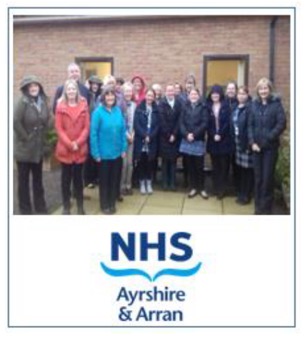
Lisa Love’s Theatre Team
Better Staff Experience Supports Better Patient Experience
Improving staff experience leads to benefits for the way we treat our patients.
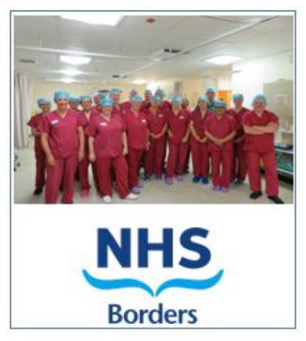
Workforce Team
One Team Together
On our journey to ‘One Team’, being creative and collaborating on one path.
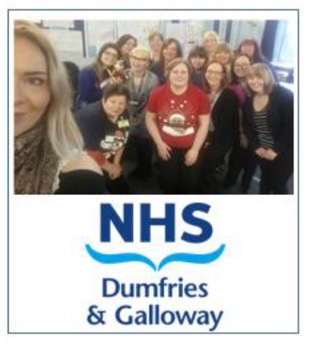
Home Care Team
iMatter to Home Care – The Journey
Overcoming complexity to rolling out iMatter on a Council network and being pleasantly surprised.
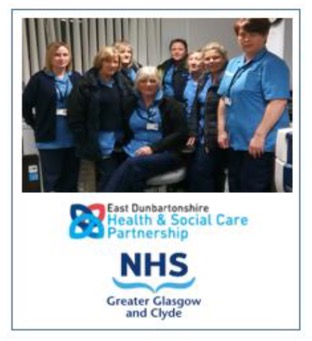
Practice Educators National Network
Working Well Together Matters
Overcoming geographical divides, diverse working patterns, using digital to transform collaboration and cross boundary working.
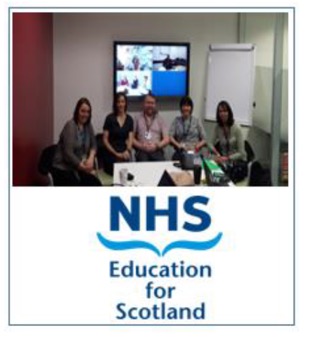
Colin Smith’s eHealth Training Team
My Team works well together
Enhancing communication and better understanding of what others are working on to improve outcomes.
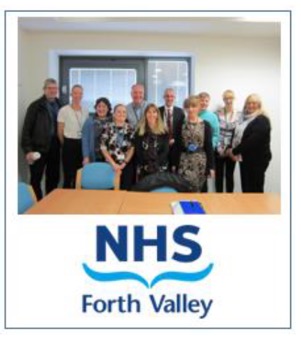
Board Administration Team
Improving, Delivering, Involving, Developing
iMatter actions need to reflect changing priorities.
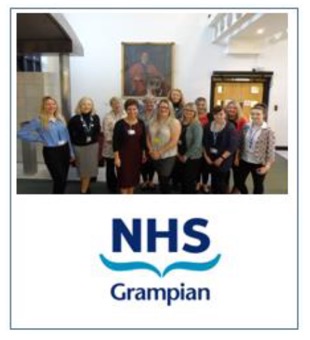
Sandra Taylor’s Midwifery Team
Positive Team Culture in Community Midwifery
Living our values through iMatter – A daily huddle helps cement the team.
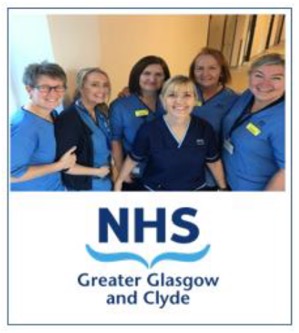
Publishing Services Team
Celebrating Success
Working together pays off – celebrating excellence from your 2016 results.
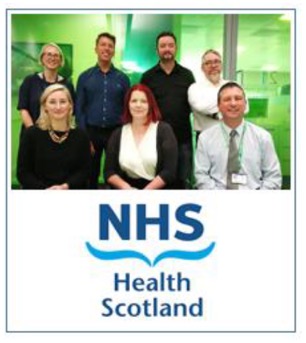
Donna Smith’s Team
The planning department without a plan
Plans for the planning department aligned to the Strategic Vision.
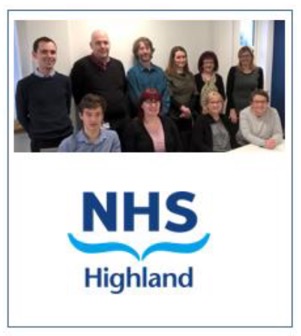
Andrea Stewart’s Admin Team
iMatter gives us all a voice
“The list has now become an invaluable communication tool”.
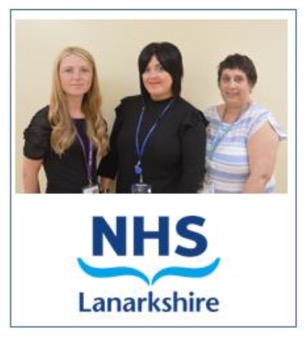
Janis Butler’s HR & OD Directorate
Improving Visibility and Communications across HR and OD
Teams were invited to discuss and think about how to guard and grow their resilience.
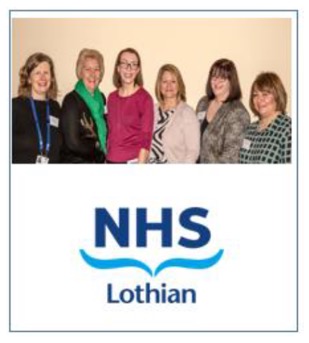
Norma Shippin’s CLO Senior Team
Simple Idea but Significant Impact!
Designating a safe space was a very simple idea, but has been transformational.
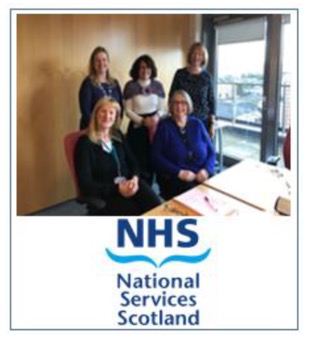
Dental Services Team
Dental Services SDM Journey – Strategy on a Page
Our Strategy Development Matrix delivers strategy on a page to improve team behaviours, communication and establish departmental goals.
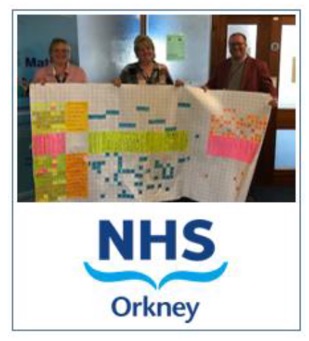
Edinburgh City Station Team
Everyone Matters @ Scottish Ambulance Service
Time for our development – making the time for reflection and making it happen.
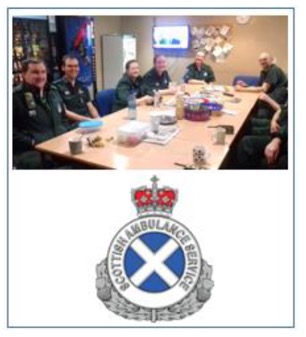
Estates and Facilities Team
Life After iMatter
Improved relationships – open, honest conversations… tell me what you want, what you really, really want.
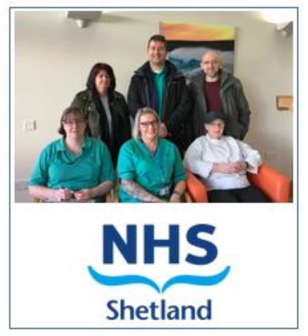
Family Nurse Partnership
FNP Team iMatter Journey
‘Teddy bear picnic demonstrates link between engaged staff with positive patient outcomes.
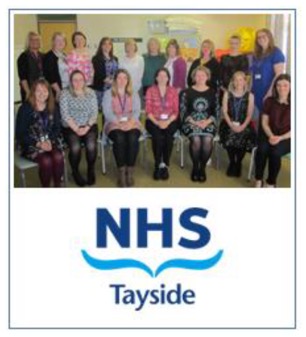
Susan Macaulay’s Emergency Department Team
Get Involved, Make a Difference
Key to providing best service for patients is paramount to this team. See what they did.
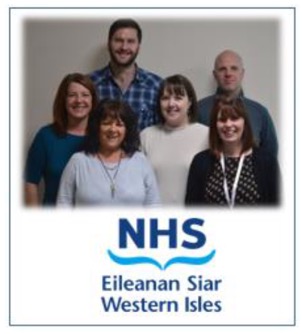
Cafe Connect Team
iMatter: Connect the Team
Independent advocate supports employees with learning disabilities record their views and develop their action plan.
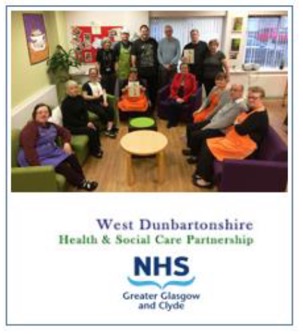
Aberdeen City HSCP Team
iMatter: Employee Engagement in the Aberdeen City HSCP
Leaning points for iMatter were identified at an improvement event and changes are already being made.
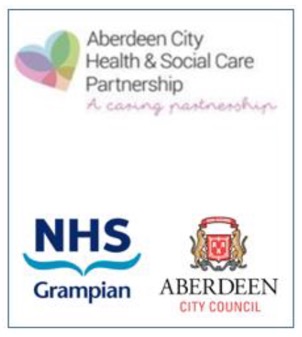
Team stories themes
The word cloud and pie chart below identify the words that appear most often in the team stories.
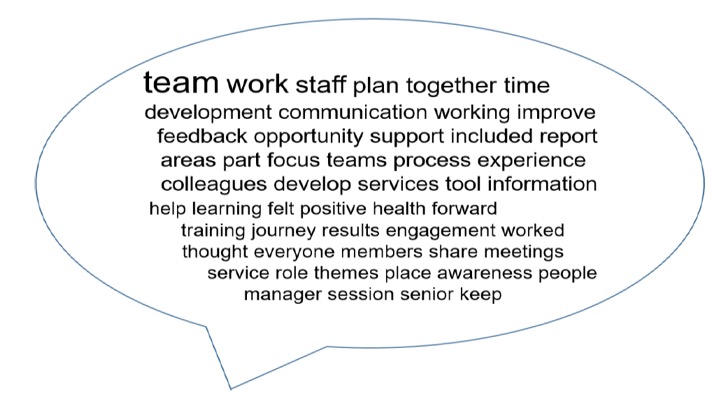
The more a word is used the larger the word appears in the word cloud. The word iMatter featured in every team story and was therefore excluded from the word cloud. As expected the word “team” was identified as the most commonly used word.
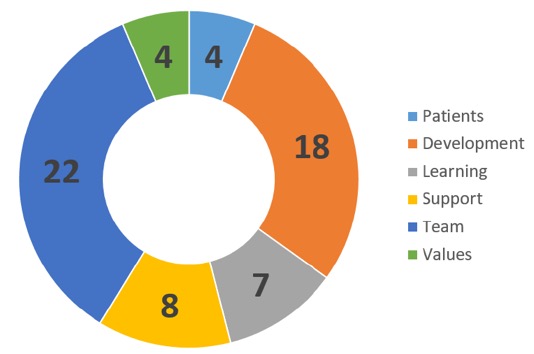
Development was referred to in 18 stories, which included 7 stories relating to learning. The stories focused on ongoing improvement, individual and collective learning and sharing learning with colleagues. Development also focuses on improving communication and strengthening links as a team.
Values were discussed in 4 of the team stories. These focus on corporate values and creating a values statement within the team to create a positive team culture. Reference was also made to how iMatter enabled staff to use their voices and feel valued.
Support is discussed in 8 team stories and focuses on communicating with colleagues. Understanding other team members and receiving support from their manager was also identified in the stories. Stories focus on supporting team and peer working and sharing good practice.
Where patient experience is addressed in the team stories, a common theme was to deliver high quality patient care and support.
Contact
There is a problem
Thanks for your feedback